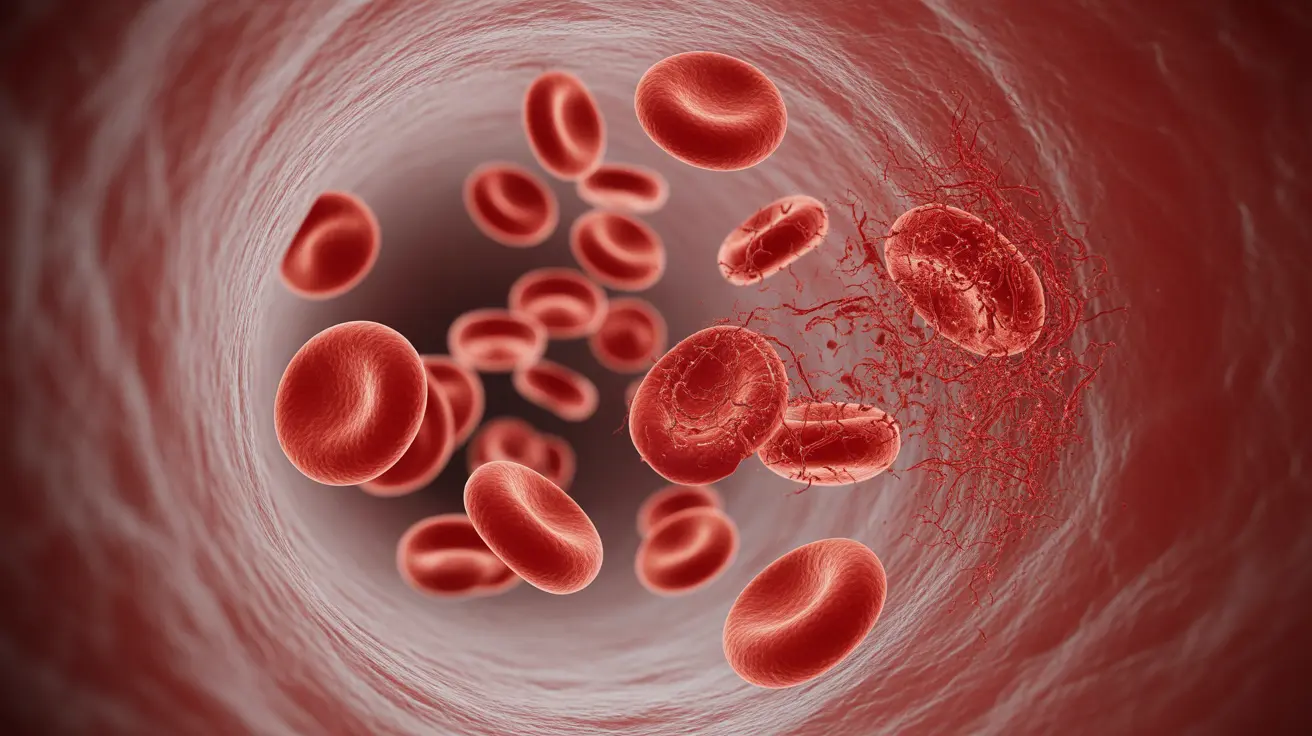Hemolytic anemia is a complex blood disorder where red blood cells are destroyed faster than the body can replace them. This condition can significantly impact a person's quality of life and requires careful medical attention. Understanding the different types, causes, and available treatments is crucial for both patients and healthcare providers.
In this comprehensive guide, we'll explore the various forms of hemolytic anemia, discuss their underlying causes, and examine current treatment approaches. Whether inherited or acquired, each type presents unique challenges and requires specific management strategies.
Types of Hemolytic Anemia
Inherited Forms
Inherited hemolytic anemia occurs due to genetic mutations passed down through families. The most common inherited types include:
- Sickle Cell Anemia
- Thalassemia
- Hereditary Spherocytosis
- G6PD Deficiency
These conditions result from various genetic alterations affecting red blood cell structure or function. Each type has distinct characteristics and requires specialized treatment approaches.
Acquired Forms
Acquired hemolytic anemia develops during a person's lifetime due to various factors:
- Autoimmune conditions
- Infections
- Medication reactions
- Exposure to certain chemicals
- Medical device complications
Signs and Symptoms
Common symptoms of hemolytic anemia include:
- Fatigue and weakness
- Shortness of breath
- Pale or yellowish skin
- Dark urine
- Rapid heart rate
- Dizziness
- Enlarged spleen
The severity of symptoms can vary significantly depending on the type and cause of hemolytic anemia.
Diagnostic Process
Diagnosing hemolytic anemia involves several steps:
- Complete blood count (CBC)
- Peripheral blood smear
- Reticulocyte count
- Direct antiglobulin test (Coombs test)
- Genetic testing for inherited forms
Healthcare providers may also perform additional tests to determine the underlying cause and type of hemolytic anemia.
Treatment Approaches
Managing Inherited Forms
Treatment for inherited hemolytic anemia focuses on managing symptoms and preventing complications. Options may include:
- Regular blood transfusions
- Bone marrow transplantation
- Folic acid supplementation
- Genetic counseling
- Preventive antibiotics
Treating Acquired Forms
For acquired hemolytic anemia, treatment typically targets the underlying cause:
- Corticosteroids for autoimmune cases
- Discontinuation of triggering medications
- Immunosuppressive therapy
- Plasma exchange
- Splenectomy in severe cases
Living with Hemolytic Anemia
Managing hemolytic anemia often requires lifestyle adjustments and ongoing medical care. Patients should:
- Maintain regular medical appointments
- Follow prescribed treatment plans
- Monitor symptoms carefully
- Make appropriate dietary modifications
- Avoid triggers when identified
- Stay up-to-date with vaccinations
Frequently Asked Questions
- What are the different types of hemolytic anemia and how do inherited and acquired forms differ?
Inherited hemolytic anemia is caused by genetic mutations passed down through families, while acquired forms develop during life due to external factors. Inherited types include sickle cell anemia and thalassemia, while acquired forms can result from autoimmune conditions, infections, or medication reactions.
- What causes inherited hemolytic anemia such as sickle cell anemia and thalassemia?
Inherited hemolytic anemia is caused by genetic mutations affecting red blood cell production or structure. Sickle cell anemia results from a mutation in the hemoglobin gene, causing red blood cells to become crescent-shaped. Thalassemia occurs due to mutations affecting hemoglobin production.
- How is autoimmune hemolytic anemia diagnosed and what triggers it?
Autoimmune hemolytic anemia is diagnosed through blood tests, including the Coombs test, which detects antibodies attacking red blood cells. Triggers can include underlying autoimmune disorders, infections, certain medications, or sometimes the cause remains unknown.
- What symptoms should I look for if I suspect hemolytic anemia?
Key symptoms include fatigue, weakness, shortness of breath, pale or yellow skin, dark urine, rapid heart rate, and dizziness. Some patients may also experience an enlarged spleen and jaundice.
- What treatment options are available for managing various types of hemolytic anemia?
Treatment varies depending on the type and cause. Options include blood transfusions, corticosteroids, immunosuppressive therapy, splenectomy, and bone marrow transplantation. Some patients may also require folic acid supplementation and lifestyle modifications.




